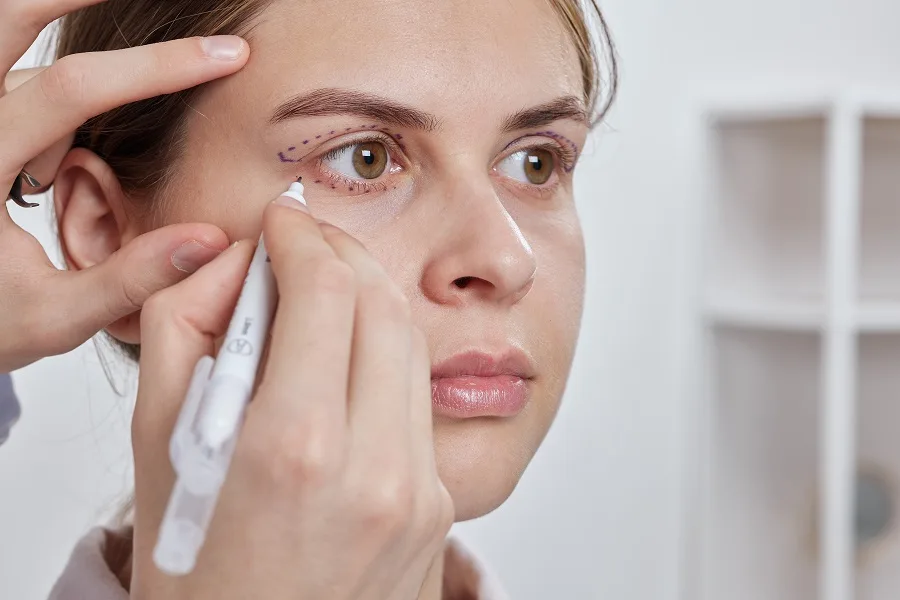Those fine lines around your eyes catch your attention every morning — crow’s feet that deepen with every smile and subtle creases that make you look more tired than you feel. The reflection in the mirror doesn’t match how energized and confident you are inside.
If you're considering Chicago Botox injections for the first time, this comprehensive guide eliminates the uncertainty surrounding your first Botox treatment. From preparation through recovery, you'll discover exactly what happens during each stage of the Botox experience.
How Should I Prepare for My First Botox Appointment?
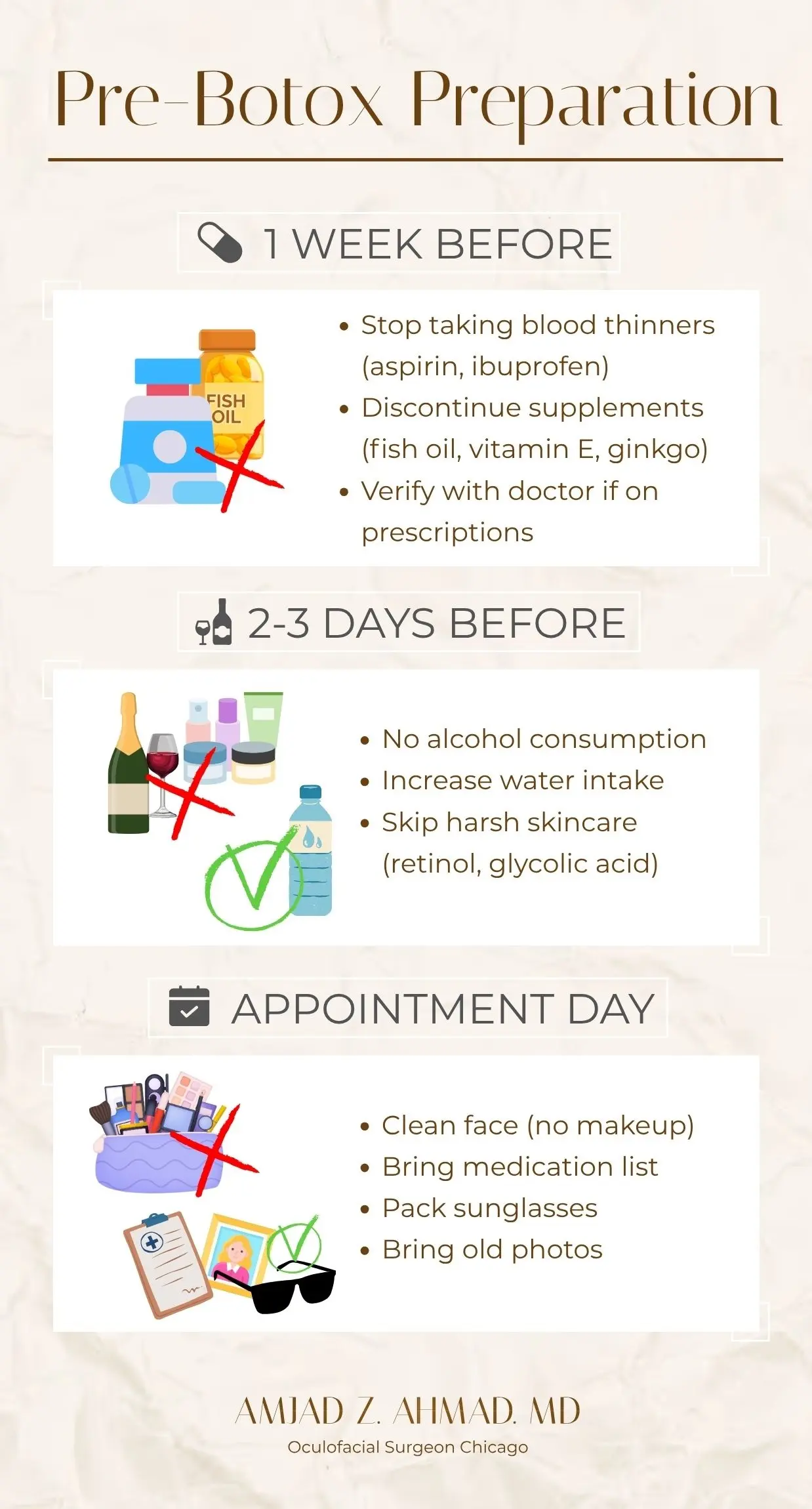
Once you’ve chosen a qualified, board-certified specialist, proper preparation becomes key to getting the best results. These straightforward steps ease nerves and help maximize the outcome of your first Botox treatment.
Research your provider carefully before booking — confirm certification and experience in facial aesthetics. Write down your main concerns, such as crow’s feet or forehead lines, and prepare your complete medical history, including current medications, supplements, and any prior cosmetic procedures. Full honesty about your health background ensures safety and protects your Botox results.
Which Medications Should I Stop Before Botox?
Blood-thinning medications and supplements can increase the likelihood of bruising at injection sites. Avoid aspirin, ibuprofen (Advil), naproxen (Aleve), and other NSAIDs for three to seven days before your appointment. Discontinue supplements like fish oil, vitamin E, ginkgo biloba, and garlic one week prior.
Critical note: Never stop prescription blood thinners without consulting your healthcare provider. Discuss timing adjustments with your prescribing physician to balance Botox preparation with your medical needs.
What Lifestyle Changes Matter Most?
Alcohol acts as a powerful vasodilator, expanding blood vessels and dramatically increasing bruising severity. Avoid all alcohol consumption for 24 to 48 hours before your Botox appointment. Hydration supports optimal skin condition — drink plenty of water in the days leading up to treatment. Arrive with a completely clean face, free from makeup, moisturizer, or any topical products for proper assessment and reduced infection risk.
What Should I Bring to My Consultation?
Bring a full list of all medications, supplements, and vitamins you take. Include a few older photos that show your natural appearance so your provider can tailor results that look authentic to you. Sunglasses can help protect your eyes afterward, and a short list of questions ensures you leave the consultation confident and informed.
What Happens During Your First Consultation?
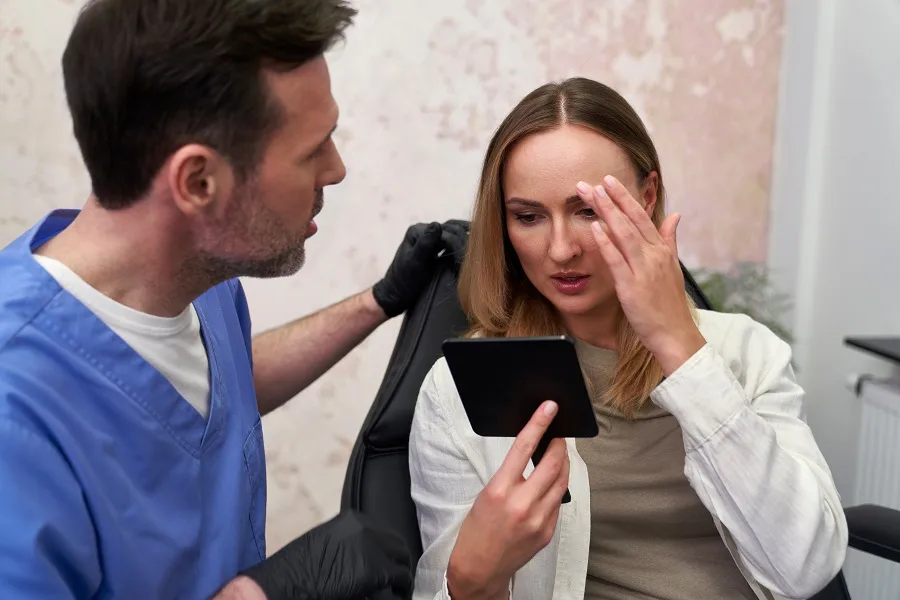
Your consultation establishes trust, aligns expectations with reality, and creates a personalized treatment plan honoring your unique facial structure. This critical first meeting determines whether Botox injections align with your aesthetic goals.
How Do You Communicate Your Goals?
Clear communication is essential for a natural, balanced result — especially for anyone getting Botox for the first time. Be specific about what concerns you most, such as crow’s feet or forehead lines, and explain the outcome you want to see. Many first-time Botox patients aim to soften fine lines while keeping natural movement and expression.
During your consultation, your provider may show before-and-after photos of real patients with similar features and explain what Botox cosmetic injections can realistically achieve. The focus is on achieving a refreshed, rested look, not an overdone or “frozen” appearance.
How Is the Right Dosage Determined?
Precision is everything when treating the delicate eye area with Botulinum toxin type A. Your provider determines the correct Botox dosage based on factors such as muscle strength, skin condition, and wrinkle depth. For crow’s feet, most patients receive between 12 and 24 total units (about six to twelve per eye), though individual plans vary.
Conservative dosing is common for a first Botox treatment, allowing your provider to make small adjustments at your two-week follow-up. It’s always easier to add units later than to correct overtreatment.
What About Costs and Timeline?
Transparent pricing eliminates financial surprises before your first Botox treatment begins. Most practices charge per unit ($10 to $20) or per treatment area ($200 to $600 for crow's feet). Your provider outlines the expected timeline — when Botox results appear, how long effects last, and when to schedule your next appointment. This financial and temporal clarity reduces anxiety, allowing you to plan your Botox experience confidently.
The Botox Procedure: What Actually Happens

The actual injection process unfolds quickly and with minimal discomfort. Most first-timers feel relieved discovering how straightforward their first Botox appointment truly is.
Your Botox treatment follows these steps:
- Skin preparation: The provider cleans the treatment area to remove oil and makeup, reducing the risk of infection.
- Optional numbing: Some patients use a numbing cream, but the fine needle means most find it unnecessary.
- Precise injection technique: Small amounts of Botox are injected into specific muscles around the eyes — usually three to five points per side for crow’s feet.
- Quick completion: The full procedure takes about 10–15 minutes.
Note on sensation: Most patients describe the feeling as a quick, mild pinch or slight stinging — similar to a mosquito bite. The discomfort remains minimal and fleeting, with each injection taking only seconds.
Immediately after your Botox treatment, you may notice minor redness, slight swelling, or small raised bumps at injection sites. These temporary signs typically resolve within the first hour. You can return to most normal activities immediately, as there's no mandated downtime after Botox injections.
What Should You Avoid After Your Botox Appointment?
Post-treatment behavior directly impacts your Botox results and recovery timeline. Following these guidelines carefully ensures the Botulinum toxin settles exactly where intended, delivering optimal outcomes.
Immediate post-treatment expectations: Stay upright for four to six hours after your first Botox treatment — avoid lying down or bending over. This helps keep the product from shifting away from the targeted muscles. Skip intense exercise, hot yoga, saunas, and steam rooms for at least 24 hours since heat and elevated heart rate can cause the Botox to spread before it fully settles.
Additional precautions to observe:
- No touching or pressure: Avoid touching, rubbing, or massaging treated areas for at least 24 hours. Even light pressure can shift Botox away from the intended muscles, creating uneven results.
- Postpone facial treatments: Wait at least two weeks before facials, chemical peels, microdermabrasion, or laser treatments. Use gentle skincare only—no harsh scrubbing or exfoliation near the injection sites.
- Minimize bruising risk: Avoid alcohol for the first 24 hours after your Botox appointment since it dilates blood vessels and increases bruising. Continue avoiding blood-thinning medications or supplements for several days unless required. If bruising occurs, apply a cold compress or arnica gel to help it fade faster.
- Protect from sun and makeup: Sun exposure can worsen inflammation and slow healing. Use SPF 30 or higher and wear sunglasses outdoors. Makeup can be applied four to six hours after treatment with a light touch, avoiding pressure. Most patients return to their normal makeup routine the next day.
When Will I See Results and How Long Do They Last?
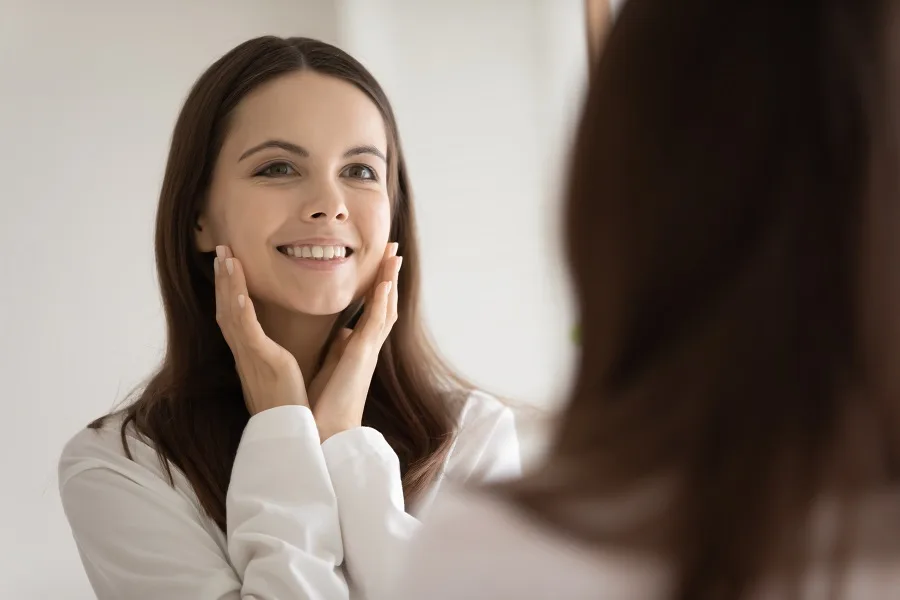
Botox develops gradually, so patience is essential during the first two weeks. The neurotoxin needs time to attach to nerve endings and block the signals that cause muscle contractions.
Initial results appear within two to three days as the Botox begins relaxing your facial muscles. You’ll notice smoother skin and a slight feeling of tightness confirming the product is working. Full effects appear after 10 to 14 days, revealing a softer, refreshed look around the eyes and forehead.
How Long Will My Results Last?
Botox around the eyes typically lasts three to four months, though the first Botox treatment results often last closer to three months. Individual factors influence longevity—faster metabolism, higher muscle activity levels, and frequent sun exposure can shorten duration. Regular exercise and excellent overall health actually support longer-lasting results through efficient cellular function and stable muscle tone.
One of our patients scheduled her follow-up treatment every four months, maintaining consistently smooth results around her eyes throughout the year.
How Can I Maintain Results over Time?
Regular Botox sessions every three to four months prevent wrinkles from deepening between treatments. Over time, many patients find they need slightly fewer units because their facial muscles contract less forcefully.
Consistent use of SPF 30+, quality skincare, and hydration between appointments helps preserve your skin’s tone and texture. Each treatment builds on the last, maintaining a natural, refined appearance.
What Happens When Botox Wears Off?
As Botulinum toxin gradually metabolizes, muscle movement returns naturally, and facial lines reappear slowly over several weeks. You won’t look worse than before your first Botox treatment — your face simply returns to its pre-treatment state. There’s no dependency or rebound effect, and no permanent change to your facial muscles. You stay in complete control of your treatments, choosing when or if to schedule your next session. The dynamic wrinkles caused by repeated muscle activity will gradually return to their previous depth.
Are There Any Risks or Side Effects?
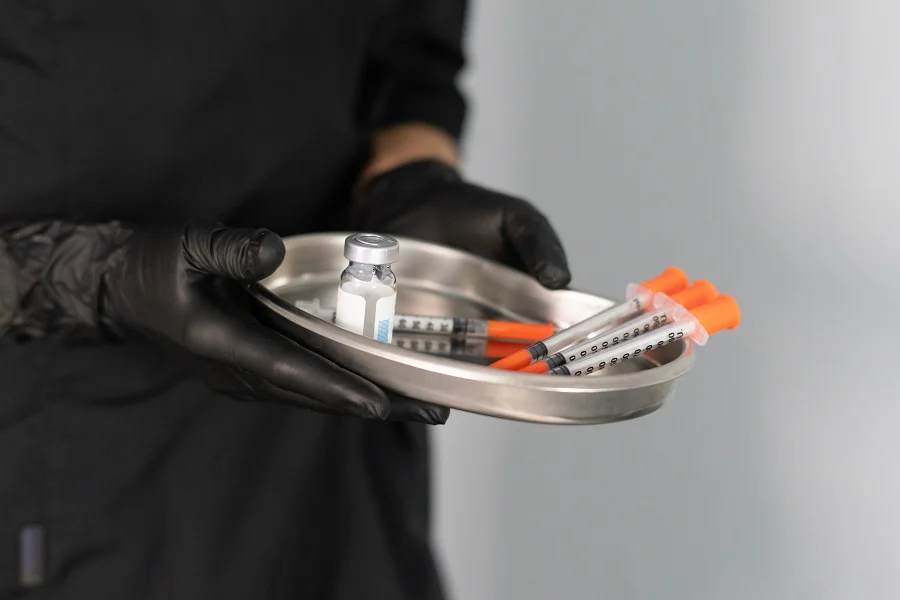
Every medical procedure carries some risk, but Botox around the eyes remains remarkably safe when administered by qualified professionals with proper training in facial anatomy. Transparency about potential complications builds trust and helps you make informed decisions.
Common side effects remain minor and temporary:
- Localized reactions: Slight swelling, redness, or bruising at injection sites usually fades within a few days after Botox injections.
- Mild discomfort: Some patients experience a short-lived headache after their appointment, easily managed with acetaminophen (avoid aspirin or ibuprofen before Botox, as they thin the blood).
- Temporary drooping: Rare cases of eyelid or brow drooping — fewer than 5% — resolve completely within several weeks as the effects of Botox wear off.
Serious complications are extremely rare when proper Botox injection techniques are followed. Allergic reactions occur in fewer than 1% of patients and are generally mild. Issues like Botox migration or temporary changes in nearby muscle activity almost always result from unqualified providers or from not following post-Botox care instructions, such as avoiding lying down or rubbing treated areas.
Your Path to Refreshed, Confident Look
Your first Botox appointment doesn’t need to feel intimidating. When you understand what to expect before, during, and after treatment, the process becomes simple and reassuring. The injections take only minutes, recovery is minimal, and your results develop naturally over the next two weeks.
Dr. Amjad Z. Ahmad brings unmatched expertise to every Chicago Botox injection, combining board-certified precision with nearly three decades of experience in facial aesthetics. His exclusive focus on the delicate eye area ensures you receive specialist-level care for your crow's feet and forehead lines. Contact us today to schedule your personalized consultation and discover how Chicago Botox injections can refresh your appearance with confidence and natural-looking results.
Start Your Journey to Natural, Refreshed Botox Results
Dr. Ahmad combines advanced knowledge of facial anatomy with a conservative dosing strategy to deliver smooth, natural results without the “frozen” look.









